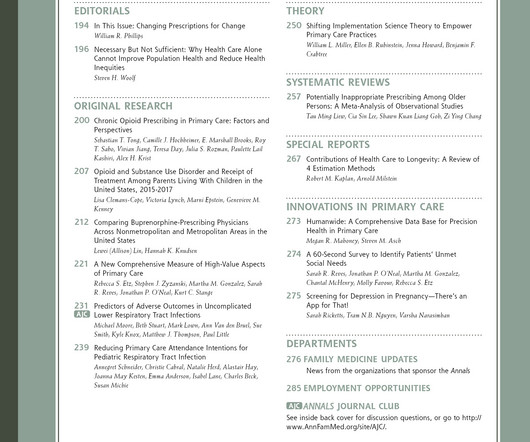Middle to Older Age Latinas Experiences Across the Cervical Cancer Continuum: Screening, Diagnosis, Treatment and Impact [Health care disparities]
Annals of Family Medicine
NOVEMBER 20, 2024
Cervical cancer screening rates among middle to older age Latinas (>45yrs) - roughly 6.5 Participants were recruited via electronic healthcare records, community tabling events, and social media efforts. Background: There is growing urgency for cervical cancer prevention among middle to older women nationally and internationally.












Let's personalize your content